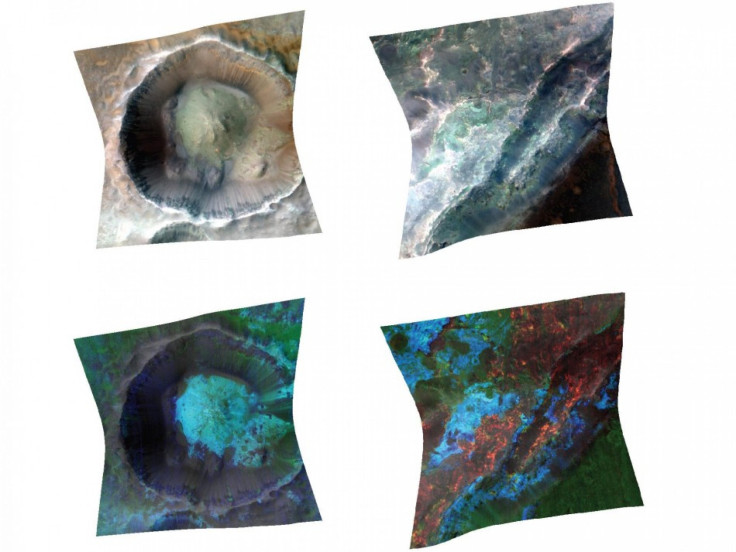Study of Clay Indicates Mars Water Was Underground: NASA

A new NASA study suggests that if life ever existed on Mars, the longest lasting habitats were most likely below the Red Planet's surface.
A new interpretation of years of mineral-mapping data, from more than 350 sites on Mars examined by European and NASA orbiters, suggests Martian environments with abundant liquid water on the surface existed only during short episodes.
These episodes occurred toward the end of a period of hundreds of millions of years during which warm water interacted with sub-surface rocks. This has implications about whether life existed on Mars and how the Martian atmosphere has changed.
The types of clay minerals that formed in the shallow subsurface are all over Mars, said John Mustard, professor at Brown University in Providence, R.I. Mustard is a co-author of the study published in the journal Nature. The types that formed on the surface are found at very limited locations and are quite rare.
Discovery of clay minerals on Mars in 2005 indicated the planet once had warm, wet conditions. If those conditions existed on the surface for a long era, the planet would have needed a much thicker atmosphere than it has now to keep the water from evaporating or freezing. Researchers have sought evidence of processes that could cause a thick atmosphere to be lost over time.
This new study supports an alternative hypothesis that persistent warm water was confined to the subsurface and many erosion features were carved during brief periods when liquid water was stable at the surface.
If surface habitats were short-term, that doesn't mean we should be glum about prospects for life on Mars, but it says something about what type of environment we might want to look in, stated the report's lead author, Bethany Ehlmann, assistant professor at the California Institute of Technology, Pasadena, and scientist at NASA's Jet Propulsion Laboratory, also in Pasadena.
The most stable Mars habitats over long durations appear to have been in the subsurface. On Earth, underground geothermal environments have active ecosystems, she added.
The discovery of clay minerals by the Omega spectrometer on the European Space Agency's Mars Express orbiter added to earlier evidence of liquid Martian water. Clays form from the interaction of water with rock. Different types of clay minerals result from different types of wet conditions.
During the past five years, researchers used Omega and the Compact Reconnaissance Imaging Spectrometer, or CRISM, instrument on NASA's Mars Reconnaissance Orbiter to identify clay minerals at thousands of locations on Mars.
Clay minerals that form where the ratio of water interacting with rock is small generally retain the same chemical elements as those found in the original volcanic rocks later altered by the water.
© Copyright IBTimes 2024. All rights reserved.





















